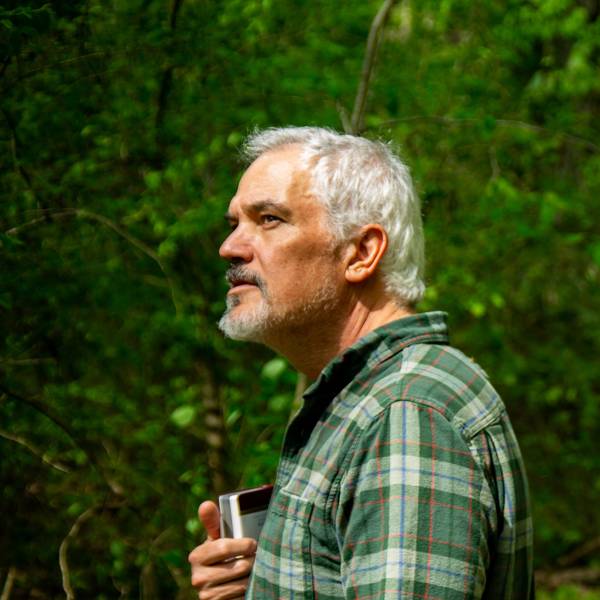We can keep ourselves and wildlife safe — if we’re willing to prioritize these types of solutions for our roadways.
If you’ve been fortunate enough to drive Alligator Alley in south Florida adjacent to Everglades National Park, you may have noticed structures commonly referred to as “wildlife underpasses” beneath the roadway. When paired with wildlife fencing, this green infrastructure separates wildlife from motorists and allows panthers, black bears, alligators and a wide variety of critters large and small to safely cross under the roadway.
Similarly, in Banff National Park in Alberta, Canada, wildlife overpasses and underpasses allow elk, grizzly bear, moose, mule deer and other large mammals to safely cross over or under the Trans-Canada Highway.
These kinds of infrastructure are wildly popular with Americans, and for good reason. After all, who wants to hit an animal with their vehicle? Each year more than 200 people in the United States are killed because of wildlife-vehicle collisions. When constructed in the right location, wildlife passage structures can reduce these collisions by more than 90%, and over time they can actually pay for themselves by reducing property damage, personal injuries, deaths and traffic delays.
Thanks to the tireless work of park advocates, regional conservationists, land managers, wildlife experts and engineers at the North Carolina Department of Transportation (NCDOT) — all collaborating as Safe Passage: The I-40 Pigeon River Gorge Wildlife Crossing Project — we will soon see wildlife passage structures in North Carolina near Great Smoky Mountains National Park.
For years, Interstate 40 in the Pigeon River Gorge has been plagued by wildlife collisions. Many of us depend on this four-lane highway to get to work or to move goods and services, to say nothing of the millions of travelers that use that roadway to visit some of western North Carolina’s national forests and parks. But the highway fragments a much older transit corridor — one that local wildlife has used for countless years.
Highway or no highway, animals are going to go where they want to go. It’s part of their primal urge to find mates, food and quality habitat. Elk will cross from the relative safety of Great Smoky Mountains National Park to the other side of the highway, into the Pisgah National Forest, to raise their calves. Bears will follow, especially in years when there is a poor acorn crop. They will take bigger risks for the potential of a reward. The cycle continues, so fluidly and effortlessly that you have to marvel at the beauty of the pattern. Unfortunately, many won’t make it across the road.
At 26,000 vehicles a day, the highway is a gauntlet for wildlife. Smaller mammals, reptiles and amphibians have no chance because of the concrete barrier that separates traffic. At some point, when traffic increases further, wildlife may not even attempt to cross because of the noise, the light and the mayhem that is Interstate 40. That spells serious problems for many species, especially considering climate change which is altering migratory patterns and ecosystems.
Wildlife and motorists on I-40 pose serious dangers to each other. But with careful planning and design, we can mitigate those risks. We are the humans; we’re the ones with the cars, the maps, the tools and the engineering know-how. We can keep ourselves and wildlife safe — if we’re willing to prioritize these types of solutions for our roadways.
There is no greater indication of our ability to protect ourselves and these captivating critters than the example set by the NCDOT. Its approved plan to build a new wildlife underpass at the Harmon Den interchange in Haywood County is a triumph for many Smokies species. Harmon Den is a crossroads for manmade boundaries, including Great Smoky Mountains National Park, the Pisgah National Forest, and the Harmon Den Bear Sanctuary, and thus is teeming with wildlife.
Stay On Top of News
Our email newsletter shares the latest on parks.
The implications of this one project stretch much farther than Harmon Den, though. Across the country, communities are getting smart about wildlife crossings — especially ones near national parks. Thanks to the passage of a bipartisan infrastructure package, the Pigeon River Gorge in North Carolina and Tennessee, as well as the rest of the nation, can potentially receive funding from a $350 million investment aimed at reducing wildlife-vehicle collisions while also increasing connectivity for the animals as they move across the landscape.
As a conservationist, hiker and motorist, I am filled with immense gratitude for the many people who worked so hard to get the Harmon Den project across the finish line. Hopefully, it’s just the starting point for North Carolina, Tennessee and other wildlife-rich communities across the country.
Learn more at SmokiesSafePassage.org. This article originally ran in the Asheville Citizen Times and is reprinted with permission.
About the author
-
 Jeffrey Hunter Southern Appalachian Director, Southeast, Southeast
Jeffrey Hunter Southern Appalachian Director, Southeast, SoutheastJeff Hunter is the Southern Appalachian Director with National Parks Conservation Association (NPCA) in Asheville, NC where he works on issues related to Great Smoky Mountains National Park, the Blue Ridge Parkway, and the Appalachian National Scenic Trail.